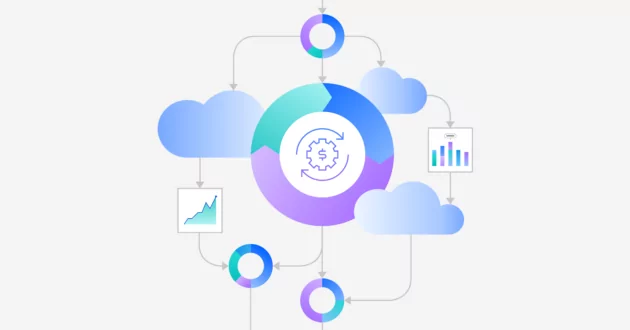
Electronic design automation (EDA) is a market segment consisting of software, hardware and services with the goal of assisting in the definition, planning, design, implementation, verification and subsequent manufacturing of semiconductor devices (or chips). The primary providers of this service are semiconductor foundries or fabs.
While EDA solutions are not directly involved in the manufacture of chips, they play a critical role in three ways:
- EDA tools are used to design and validate the semiconductor manufacturing process to ensure it delivers the required performance and density.
- EDA tools are used to verify that a design will meet all the manufacturing process requirements. This area of focus is known as design for manufacturability (DFM).
- After the chip is manufactured, there is a growing requirement to monitor the device’s performance from post-manufacturing test to deployment in the field. This third application is referred to as silicon lifecycle management (SLM).
The increasing demands for computers to match the higher fidelity simulations and modeling workloads, more competition, and the need to bring products to market faster mean that EDA HPC environments are continually growing in scale. Organizations are looking at the best leveraging technologies—such as accelerators, containerization and hybrid cloud—to gain a competitive computing edge.
EDA software and integrated circuit design
Electronic design automation (EDA) software plays a pivotal role in shaping and validating cutting-edge semiconductor chips, optimizing their manufacturing processes, and ensuring that advancements in performance and density are consistently achieved with unwavering reliability.
The expenses associated with acquiring and maintaining the necessary computing environments, tools and IT expertise to operate EDA tools present a significant barrier for startups and small businesses seeking entry into this market. Simultaneously, these costs remain a crucial concern for established firms implementing EDA designs. Chip designers and manufacturers find themselves under immense pressure to usher in new chip generations that exhibit increased density, reliability, and efficiency and adhere to strict timelines—a pivotal factor for achieving success.
This challenge in integrated circuit (IC) design and manufacturing can be visualized as a triangular opportunity space, as depicted in the figure below:

EDA industry challenges
In the electronic design automation (EDA) space, design opportunities revolve around three key resources:
- Compute infrastructure
- Designers
- EDA licenses
These resources delineate the designer’s available opportunity space.
For design businesses, the key challenge is selecting projects that promise the highest potential for business growth and profitability. To expand these opportunities, an increase in the pool of designers, licenses or compute infrastructure is essential.
Compute infrastructure
To expand computing infrastructure on-premises, extensive planning and time are required for the purchase, installation, configuration and utilization of compute resources. Delays may occur due to compute market bottlenecks, the authorization of new data center resources, and the construction of electrical, cooling and power infrastructure. Even for large companies with substantial on-premises data centers, quickly meeting the demand for expanded data centers necessitates external assistance.
Designers
The second factor limiting realizable opportunities is the pool of designers. It is a challenge to hire designers, being highly skilled engineers, swiftly. The educational foundation required for design takes years to establish, and it often takes a year or more to effectively integrate new designers into existing design teams. This makes designers the most inelastic component on the left side of the figure, constraining business opportunities.
EDA licenses
Lastly, EDA licenses are usually governed by contracts specifying the permissible quantities and types of tools a firm can use. While large enterprises may explore enterprise licensing contracts that are virtually unlimited, they are prohibitively expensive for startups and small to medium-sized design firms.
Leveraging cloud computing to speed time to market
Firms (irrespective of size) aiming to expand their business horizons and gain a competitive edge in terms of time-to-market can strategically leverage two key elements to enhance opportunities: cloud computing and new EDA licensing.
The advent of cloud computing enables the rapid expansion of compute infrastructure by provisioning or creating new infrastructure in public clouds within minutes, in contrast to the months required for internal infrastructure development. EDA software companies have also started offering peak-licensing models, enabling design houses to utilize EDA software in the cloud under shorter terms than traditional licensing contracts.
Leveraging cloud computing and new EDA licensing models, most design houses can significantly expand their business opportunity horizons. The availability of designers remains an inelastic resource; however, firms can enhance their design productivity by harnessing the automation advantages offered by EDA software and cloud computing infrastructure provisioning.
How IBM is leading EDA
In conjunction with IBM’s deep expertise in semiconductor technology, data, and artificial intelligence (AI), our broad EDA and HPC product portfolio encompasses systems, storage, AI, grid, and scalable job management. Our award-winning storage and data transfer products—such as IBM Storage Scale, IBM Spectrum LSF and IBM Aspera—have been tightly integrated to deliver high-performance parallel storage solutions and large-scale job management across multiple clusters and computing resources.
IBM Cloud EDA infrastructure offers foundry-secure patterns and environments, supported by a single point of ownership. EDA firms can quickly derive value from secure, high-performance, user-friendly cloud solutions built on top of IBM’s industry-leading cloud storage and job management infrastructure.
In the coming months, IBM technical leaders will publish a white paper highlighting our unique capability to offer optimized IBM public cloud infrastructure for EDA workloads, serving both large and small enterprise customers.
I would be happy to discuss the challenges faced by the EDA industry and how IBM can help. Reach out to me here.
Learn more about IBM high-performance computing solutions
More from Cloud

October 30, 2023
IBM Tech Now: October 30, 2023
< 1 min read – Welcome IBM Tech Now, our video web series featuring the latest and greatest news and announcements in the world of technology. Make sure you subscribe to our YouTube channel to be notified every time a new IBM Tech Now video is published. IBM Tech Now: Episode 88 On this episode, we’re covering the following topics: A technology collaboration between IBM and Equinix Implementing the White House cybersecurity plan Recognition for IBM Security QRadar SIEM as the Cybersecurity Breakthrough Awards’ “SIEM…
<!—->

October 26, 2023
Operationalize and automate FinOps with Apptio Cloudability and IBM Turbonomic
2 min read – From traditional enterprises to the most innovative startups, organizations are using the public cloud. In fact, ESG Research found that 91% of all applications will eventually be hosted in the public cloud. That much investment has necessitated the FinOps movement, a cloud financial management discipline designed to bring financial accountability to the variable, consumption-based spend model of cloud. We have seen that experienced FinOps practitioners are pushing the boundaries of “what’s possible” in cloud cost management, lobbying for advanced support…
<!—->

October 25, 2023
IBM Cloud Databases for Redis is announcing the End of Life for version 6 on October 25, 2024
< 1 min read – After October 25, 2024, all IBM Cloud Databases for Redis instances on version 6.0 that are still active will be upgraded in-place to Redis version 6.2. This will be done according to our Database Versioning Policy. Next steps Users are expected to upgrade their IBM Cloud Database for Redis instance to version 6.2 using the backup and restore process before the EOL date of version 6. We strongly recommend that you do not wait for the in-place upgrade due to the following reasons: We provide…
<!—->

October 24, 2023
Enterprise-managed IAM: An SRE team case study
5 min read – Enterprise-managed identity and access management (IAM) enables cloud administrators to centrally configure access and security settings for the entire organization. To learn about the basics, see “How enterprise-managed IAM works.” The case study in this blog post shows how to easily and securely implement and manage a site reliability engineering (SRE) team’s access across an enterprise. Case study A large banking client has a centralized site reliability engineering (SRE) team that manages operations for all resources in the organization. The…
<!—->
IBM Newsletters
Get our newsletters and topic updates that deliver the latest thought leadership and insights on emerging trends.
Subscribe now More newsletters
- SEO Powered Content & PR Distribution. Get Amplified Today.
- PlatoData.Network Vertical Generative Ai. Empower Yourself. Access Here.
- PlatoAiStream. Web3 Intelligence. Knowledge Amplified. Access Here.
- PlatoESG. Carbon, CleanTech, Energy, Environment, Solar, Waste Management. Access Here.
- PlatoHealth. Biotech and Clinical Trials Intelligence. Access Here.
- Source: https://www.ibm.com/blog/leveraging-ibm-cloud-for-electronic-design-automation-eda-workloads/



